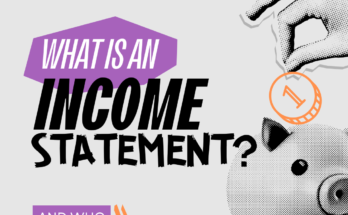In the world of business, where time is often a precious commodity, the executive summary emerges as a beacon of efficiency. This succinct yet powerful tool serves as a gateway to the core of a proposal or business plan, capturing attention and conveying the essence of the document in a fraction of the space. This article aims to shed light on the significance of an executive summary. In this comprehensive guide, we will explore why the executive summary is indispensable, delve into the various types of executive summaries, dissect the essential components that should be included, and differentiate it from its more extensive counterpart—the business plan.
Table of Contents
What is an Executive Summary?
An executive summary is a concise yet comprehensive overview of a business proposal, report, or plan. It serves as a condensed version of the key points, providing readers with a snapshot of the main ideas and goals. Its significance lies in its ability to distill the essence of the proposal, presenting the main ideas, goals, and value propositions in a concise format. By capturing attention early, an executive summary ensures that the critical aspects of the proposal are noticed, leading to further exploration.
At its core, the executive summary is a persuasive piece. It’s your opportunity to make a compelling case for why your proposal or business plan deserves consideration. It provides a snapshot of your vision, highlighting the value your initiative brings to the market and showcasing your professionalism and thoroughness. Without a strong executive summary, your full document might never receive the attention it deserves.
Why is an executive summary important?
The executive summary holds a pivotal role in the decision-making process. Busy executives, investors, and stakeholders often don’t have the time to delve into lengthy documents. An executive summary acts as a gateway, enticing them to explore further. It serves as a critical tool for grabbing attention, conveying the essence of the proposal, and making a compelling case for further consideration. Imagine a busy executive or investor sifting through a pile of reports, each vying for their attention. This scenario is where an effective executive summary shines.
Types of executive summaries
There are various types of executive summaries, each tailored to specific purposes. Diverse scenarios call for different types of executive summaries, each tailored to its unique purpose. A business plan executive summary is one of the most common types, summarizing the comprehensive business plan, including strategy, financial projections, and market analysis. This type is crucial when seeking investment, as it acts as the “elevator pitch” that can either open the doors to funding or be met with indifference.
Project-based executive summaries focus on specific initiatives within a business, summarizing the objectives, benefits, and expected outcomes of the project. These are valuable for internal communication within a company or for presenting a targeted proposal to clients.
Research report executive summaries provide a glimpse into the findings and conclusions of a study. These summaries are particularly useful when disseminating information to a wider audience, conveying the key takeaways without delving into the full report’s details.
Who needs an executive summary?
While businesses seeking funding, such as startups or those expanding, are the most common users of executive summaries, they’re not the only ones. Established companies might use them when introducing new initiatives or presenting a strategic shift. Nonprofits can utilize executive summaries to showcase their mission and goals, while government agencies might use them to summarize policy recommendations.
What’s included in an executive summary?
An effective executive summary is a carefully orchestrated composition that encapsulates the most vital aspects of your proposal. Here’s a breakdown of the key components:
- Brief description of the business: This introduction sets the stage, outlining what your business does, its products/services, and its unique value proposition that differentiates it in the market.
- Problem the business solves: Address the pain points or challenges that your business addresses, emphasizing the significance of your solution in meeting these needs.
- Brief market analysis: Present a high-level overview of the market landscape, discussing its size, growth potential, and key trends. Show that you’ve done your homework and understand the environment in which you’ll operate.
- Mission statement: Articulate your company’s mission, values, and long-term objectives. This provides a glimpse into your vision, adding a human touch to the summary.
- Summary of financial details: Highlight critical financial information, including revenue projections, gross margins, and any substantial expenses or investments required.
- Funding request: If seeking investment, be clear about the amount you need and precisely how you intend to use those funds. This is a pivotal point that demands a convincing rationale for the investment.
How long should the executive summary be?
The ideal length of an executive summary generally falls between 5-10% of the total length of the original document.
What should the executive summary accomplish?
An effective executive summary should accomplish several goals:
- Capture attention: Hook the reader with a compelling opening that makes them want to read further.
- Convey the main points: Summarize the essential elements of the proposal, making it clear what the opportunity is and why it’s worth consideration.
- Spark interest: Create curiosity about the details, leading the reader to explore the full document.
- Showcase professionalism: Demonstrate that you’ve done thorough research, have a clear plan, and understand the market.
Executive Summary Vs Business Plan: What’s the difference?
While an executive summary is a concise overview, a business plan is a detailed document that includes in-depth information about every aspect of the business. Think of the executive summary as the “elevator pitch,” designed to grab attention quickly, whereas the business plan is the comprehensive roadmap that provides all the nitty-gritty details. The executive summary is a teaser, while the business plan is the full story.
The executive summary and the business plan are two distinct yet interconnected elements. The executive summary is more of a teaser or an executive-level overview that entices the reader to explore further. Its primary goal is to capture attention, provide a snapshot of the proposal’s essence, and create curiosity.
On the other hand, a business plan is a comprehensive, detailed document that elaborates on every aspect of the business, project, or initiative. It’s a strategic roadmap, covering the market analysis, operational details, financial projections, competitive landscape, and more. While the executive summary is concise, the business plan dives deep, providing the full context and intricate details necessary for comprehensive decision-making.
Conclusion
In the fast-paced world of business, where attention spans are short and decisions are made quickly, a well-crafted executive summary can make all the difference. It’s the gateway to getting your proposal, plan, or idea noticed. By understanding its components, purpose, and intended audience, you can create an executive summary that stands out, captures interest, and paves the way for further exploration. Whether you’re a startup seeking investment or an established company unveiling a new initiative, or a researcher sharing findings, a well-crafted and compelling executive summary can be the key to success.
Executive Summary Examples.
Click here to sign up for our free membership and download free examples of Executive Summaries.





